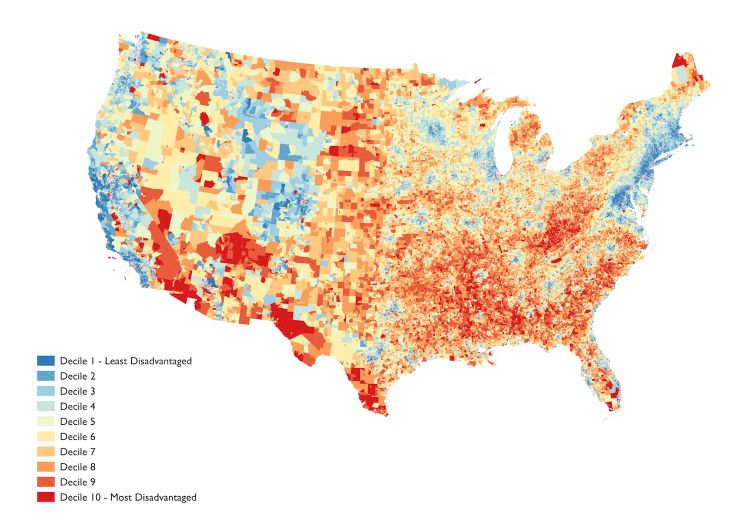Disadvantaged neighborhoods help explain some of Alzheimer’s disease racial disparities

Amy Kind, MD, PhD, associate professor, Geriatrics and Gerontology, was featured in a story about her investigations into the association of socioeconomic disadvantage in neighborhoods, baseline cognition, and biomarkers of Alzheimer's disease in Wisconsin Registry for Alzheimer’s Prevention (WRAP) subjects. WRAP is a cohort of older adults with a parental history of the disease.
Higher levels of neighborhood disadvantage were associated with worse cognitive outcomes and higher levels of one disease biomarker.
"These early data suggest that neighborhood disadvantage may account for some of the observed disparities in prevalence of dementia," wrote Dr. Kind.
A second article summarized both this research and the work of Megan Zuelsdorff, PhD, postdoctoral fellow, Health Disparities Research Scholar Program, UW School of Medicine and Public Health.
Dr. Zuelsdorff and colleagues found that African Americans in the WRAP cohort experienced over 60 percent more stressful events than whites over their lifetimes.
These experiences were one of the strongest predictors of poorer memory and thinking skills in older age.
Resources:
- "Disadvantaged neighborhoods help explain some of Alzheimer’s disease racial disparities," Medical Research, July 26, 2017
- "Research details how racial disparities, stress and poverty can affect Alzheimer’s risk," Covering Health - a publication of the Association of Health Care Journalists, August 3, 2017